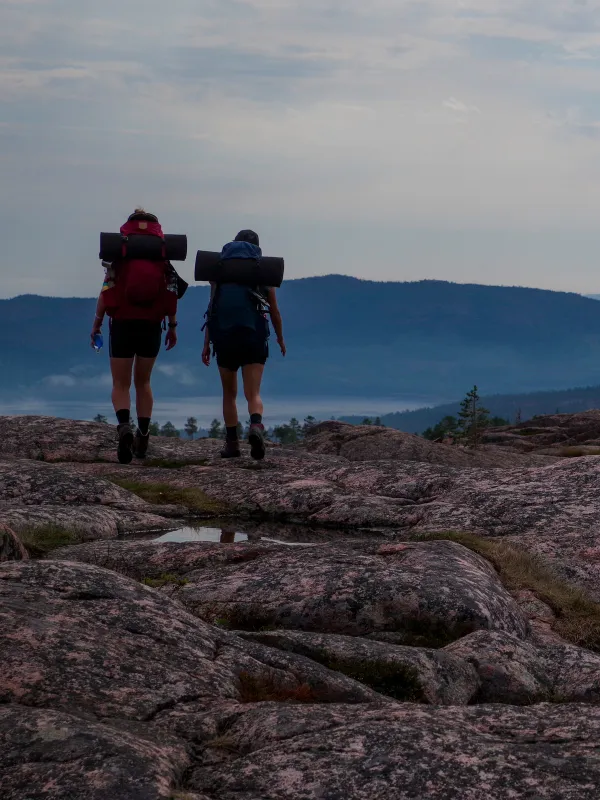Hiking doesn’t require a lot of special equipment, but there are a few things worth thinking about that will help make your experience as enjoyable as possible.
First of all, think about what kind of person you are and what non-essential items you think you won’t be able to do without. And then convince yourself that you will be able to cope without them! Hiking is all about being present, living in the here and now, and taking the time to soak in your surroundings. Once you get in the zone, the only things of importance are having comfortable clothing and shoes, that your pack is comfortable to carry, and that you have something to eat and drink when you need to replenish your energy reserves. However, a camera/smart phone is always good to have along so you can document your adventure.
Find your way
Map, compass, waterproof map case, head torch and GPS.
For documentation & spare time
A pen, notebook and a good book.
Staying overnight
Tent, sleeping mat, a small sit pad, sleeping bag, pillow, head torch with extra batteries and a lantern for your tent.
Carrying your load
A backpack has to be comfortable to carry, preferably fitted to its wearer so that it sits well. If you are out on a daytrip or will be sleeping in hostels or hotels, you shouldn’t need to pack more than 30 litres of gear. If you are out for the weekend and need to take a tent, sleeping bag and sleeping mat, you should be able to fit everything into a 50-litre pack. Your backpack, sleeping bag and tent shouldn’t weight more than 3 kg together, and food and clothing will be added to this. Distribute the weight evenly by placing heavy items against the back. It’s a good idea to take a rain cover for your pack, pack bags and hiking poles.
For undesired visitors
Mosquito net/mosquito hat, bug spray, tick remover.
Eating & cooking
Water bottle, camping kitchen (burner and pots), fuel, lighter/matches, knife, cup, cutlery, little wisp, pot handle, washing up liquid, dish brush, freeze-dried food, multi tool, coffee/tea, salt and pepper, energy snacks (e.g. dried fruit and nuts), rubbish bag.
Footwear & socks
Worn-in outdoor training shoes or running shoes are great for daytrips with lighter backpacks. It can be a good idea to use waterproof shoes with Gore-Tex, for example, on wet days. If you are going to hike long stretches and have a heavy backpack, light hiking boots are recommended as they give you more stability and better ankle support. Many hikers prefer to wear two pairs of socks – a thin inner sock and a somewhat thicker outer wool sock – this helps prevent blisters. Sports socks that are shaped to the foot and don’t fall down are preferable.
Clothing
Applying the layering principle is a good idea. Your base layer should keep you warm and wick away moisture from the skin (wool or synthetic), the mid layer should wick any moisture further away but keep warmth in (wool or fleece), and the outer layer should protect you from wind and rain as well as keep you warm. Garments to pack might include a long-sleeved base-layer top, a short-sleeved base-layer top, long johns, underwear (briefs, sports bra), woollen socks (thin + thicker), hiking trousers, warm sweater (fleece or wool), airy shirt in functional fabric, hat and/or buff, windproof gloves, rain gear (jacket and pants), waterproof pack bags for underwear, swimming gear.
A stitch in time...
Needle & thread, duct tape, multitool, steel wire, strong thin cord that can double as a tent guy rope, patches for tent and any inflatable mats.
Hygiene & first aid
First aid kit, toothbrush and toothpaste, plasters for blisters, paracetamol, toilet bag, fast-drying towel, toilet paper, soap, sunscreen.
For when you reach civilisation
Wallet, phone, sunglasses, binoculars, waterproof pack bag for electronic devices.



